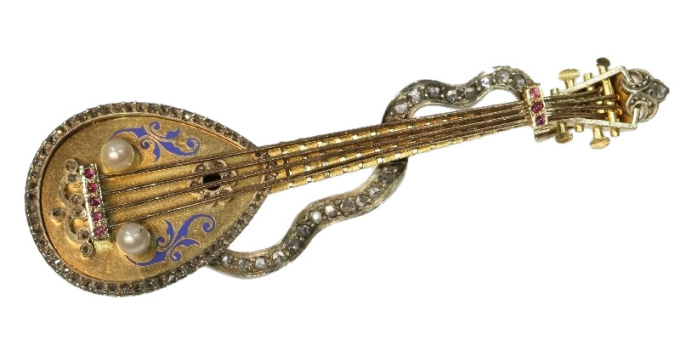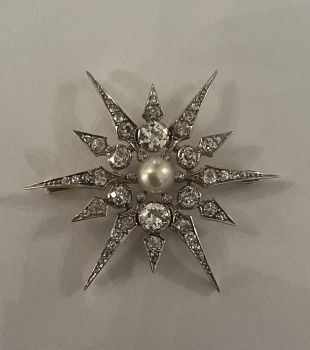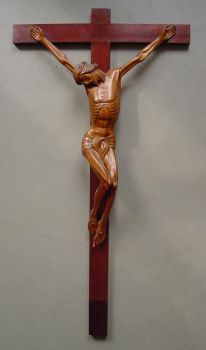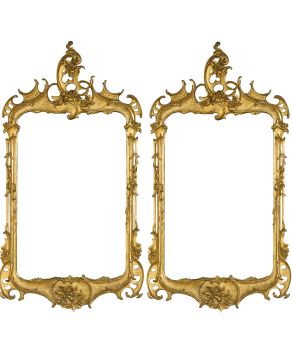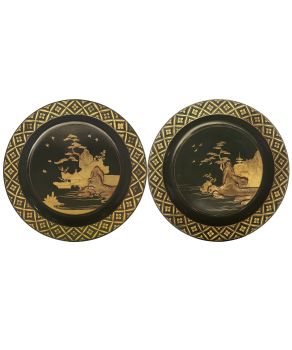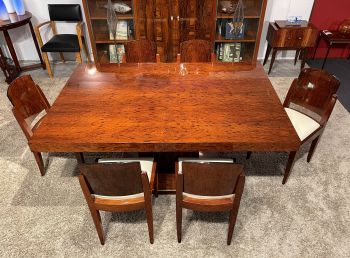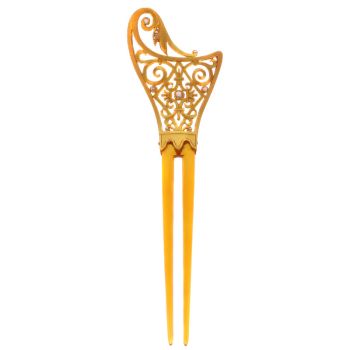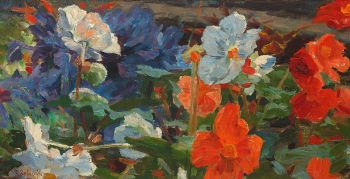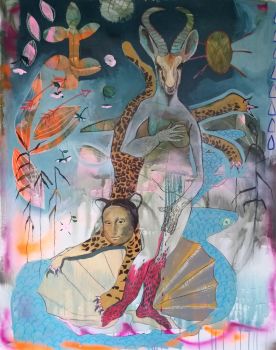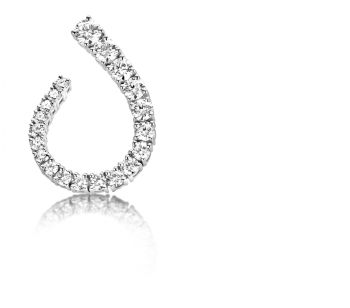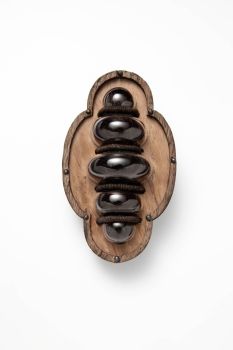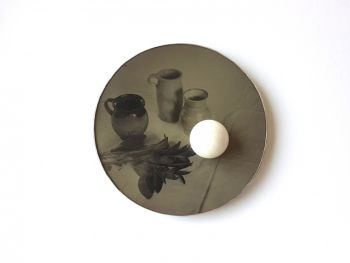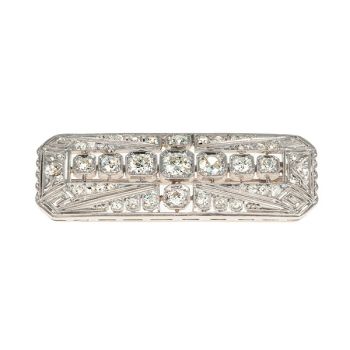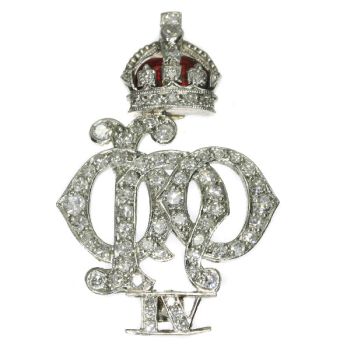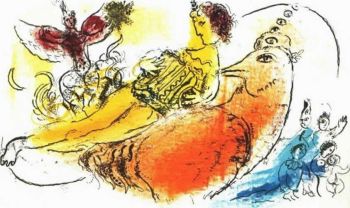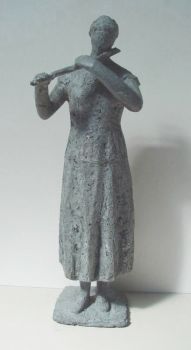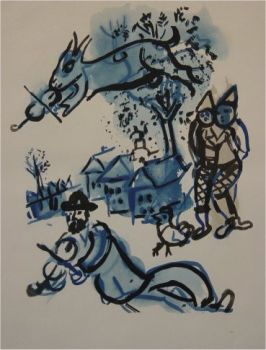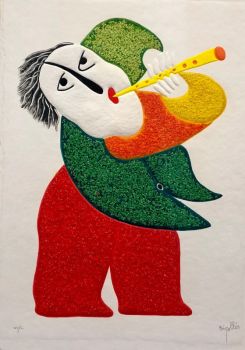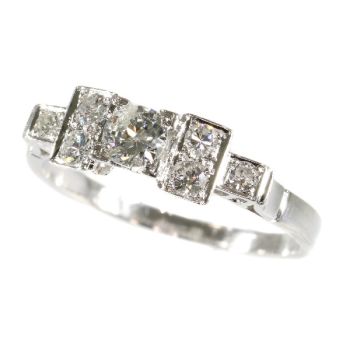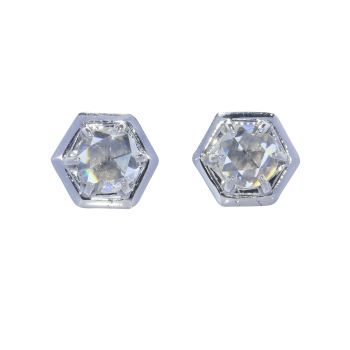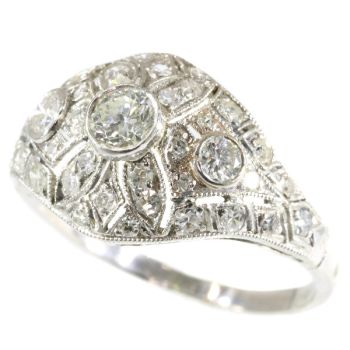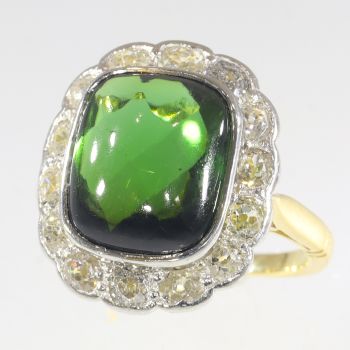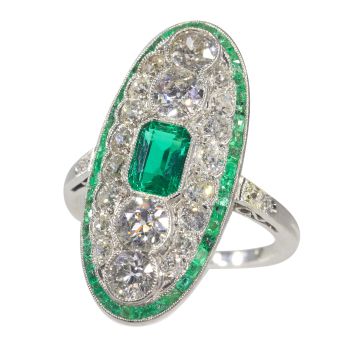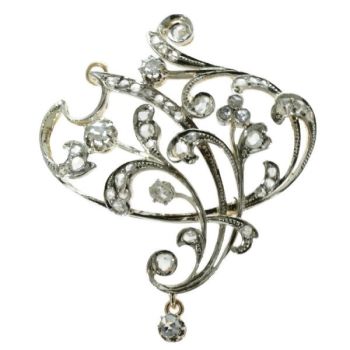Russische antieke broche mandoline of domra met roosgeslepen diamanten en emaille 1910
Onbekende Kunstenaar
DiamantGoudZilverEdelsteen
€ 11.500
Adin Fine Antique Jewellery
- Over kunstwerk
94 rose cut diamonds all encrusted in silver carry you through this 14K red gold Russian Victorian brooch, starting from the stringed musical instrument's head with miniature tuning pegs and via the draping strap over to the body embellished with adiamond rim and blue enamelled inlay frills. Besides the diamond sound hole and bridge, it's the eight cabochon cut rubies in the nut and the bridge pins and the two seed pearls next to the chords that make this mandolin reach its crescendo.
Antique jewelry object group: brooch
Condition: excellent condition
- (more info on our condition scale)
Country of origin: Russia (Transcaucasia)
Style: Victorian - Victorian decorative arts refers to the style of decorative arts during the Victorian era. The Victorian era is known for its eclectic revival and interpretation of historic styles and the introduction of cross-cultural influences from themiddle east and Asia in furniture, fittings, and Interior decoration. Victorian design is widely viewed as having indulged in a regrettable excess of ornament. The Arts and Crafts movement, the aesthetic movement, Anglo-Japanese style, and Art Nouveaustyle have their beginnings in the late Victorian era.
- See also: Victorianor more info on styles
Period: ca. 1910
- (events and facts in 1910)
Source of inspiration: Musical instruments
Theme: Mandoline, or perhaps more likely the four string domra.
Material: 14k red gold and silver, see also: The silver on gold technique
- (more info on precious metals)
Technique: Enamelling is an old and widely-adopted technology. The ancient Egyptians applied enamels to pottery and stone objects. The ancient Greeks, Celts, Russians, and Chinese also used enameling processes on metal objects. Enamel is the colorful result offusing powdered glass to a substrate by firing, usually between 750 and 850 degrees Celsius. The powder melts and flows and hardens to a smooth, durable vitreous coating on metal, glass or ceramic. According to some sources, the word enamel comes fromthe High German word smelzan (to smelt) via the Old French esmail. Used as a noun, "an enamel" is a usually small decorative object, coated with enamel coating, such as a champlevé or a cloisonné (different techniques).
Diamonds:94 rose cut diamonds. We do not have the weight of the diamonds which is normal in our trade when it comes to rose cuts.
Precious stones: eight cabochon cut ruby. We did not check if the ruby is lab produced or not as this information has no influence on the value of this jewel. Natural rubies and lab produced rubies were both used in this era, rather more for their effect than for their intrinsic value.and two seed pearls
- (more info on precious stones)
Birthstones: Diamond is the birthstone (or month stone) for April, ruby for July and pearl for June.
- (more info on birthstones)
Hallmarks: Pre-revolution Russian hallmarks for 14K gold. Hallmarked in Transcaucasia, known because of the letter 'O' in the hallmark. This hallmark was used between 1908 and the Russian Revolution in 1917. Furthermore we found a French control mark thatindicates that the piece has been imported to France....
If this piece could only talk... What amazing story would we hear.
- (more info on hallmarks)
Dimensions: Width 6,13 cm (2,41 inch)
Weight: 11,60 gram (7,46 dwt)
Reference Nº: 14185-0013
Copyright photography: Adin, fine antique jewelry
- Over kunstenaar
Het kan voorkomen dat een kunstenaar of maker onbekend is.
Voor sommige werken is het niet te bepalen door wie het gemaakt is of dat het is gemaakt door (een groep) ambachtslieden. Voorbeelden zijn beelden uit de Oudheid, meubels, spiegels of handtekeningen die vaak niet duidelijk of leesbaar zijn. Maar ook sommige werken zijn helemaal niet gesigneerd.
Ook kunt u de volgende beschrijving vinden:
•"Toegeschreven aan …." waarschijnlijk een werk van de kunstenaar maar niet zeker of gedeeltelijk
•“Atelier van ….” of werkplaats van” een werk uitgevoerd in het atelier of atelier van de kunstenaar, eventueel onder zijn toezicht
•“Cirkel van ….” een werk uit de periode van de kunstenaar die zijn invloed laat zien, nauw verbonden met de kunstenaar maar niet noodzakelijkerwijs zijn leerling
•“Stijl van ….” of “Volger van ….” een werk uitgevoerd in de stijl van de kunstenaar, maar niet noodzakelijk door een leerling; kan eigentijds of bijna eigentijds zijn
•“Wijze van ….” een werk in de stijl van de kunstenaar maar van latere datum
•"Na …." een kopie (van welke datum dan ook) van een werk van de kunstenaar
•“Getekend…”, “Gedateerd….” of “Ingeschreven” dan is het werk gesigneerd/ gedateerd/ ingeschreven door de kunstenaar. De toevoeging van een vraagteken duidt op een element van twijfel
•"Met handtekening ...", "Met datum ...", "Met opschrift..." of “Draagt signatuur/datum/opschrift” dan is de handtekening/datum/opschrift toegevoegd door iemand anders dan de kunstenaar
Bent u geïnteresseerd om dit kunstwerk te kopen?
Artwork details
Related artworks
- 1 - 4 / 12
- 1 - 4 / 24
Onbekende Kunstenaar
Enchanting 1870s Vintage Fly Brooch: Victorian Elegance in Gold1870
€ 4.600Adin Fine Antique Jewellery
 Gecureerd door
Gecureerd doorDanny Bree
1 - 4 / 24Carel Nicolaas Storm van 's Gravesande
Mijn atelier in Brussel1841 - 1924
Prijs op aanvraagKunsthandel Pygmalion
1 - 4 / 15- 1 - 4 / 24
- 1 - 4 / 12


